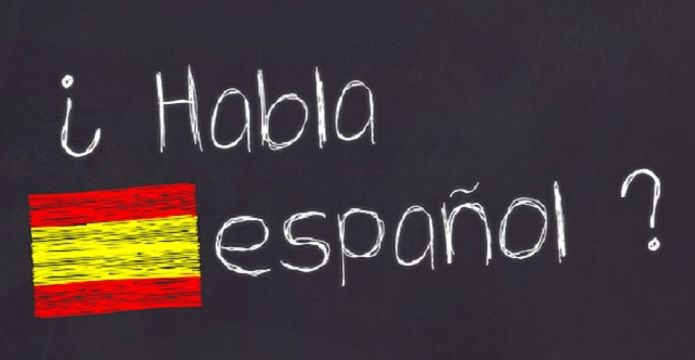Spanish, one of the 5 most spoken languages in the world

Spanish, one of the 5 most spoken languages in the world
Spanish is a language of great importance throughout the world due to its cultural importance and the large number of speakers. It is estimated that around 591 million people have Spanish as their official language.
Is the second most spoken language as a native language, just behind Mandarin Chinese.
What does it mean? Well, for example, even though English is the most spoken language in the world with 1.132 million speakers, more than half of them are not of Anglo-Saxon origin, but learned it as a language foreign.
Instead, there are a larger number of native Spanish speakers. It is estimated that there are currently 493 million native Spanish speakers.
The Spanish language, also called Castilian, originates from the Castile region of Spain. During the Middle Ages, the Kingdom of Castile was an important center of cultural and linguistic development on the Iberian Peninsula. Castilian developed from the Vulgar Latin spoken by the populations of the region, with influences from languages such as Basque, Celtic and Arabic, resulting from the presence of different cultures on the peninsula.
As the Kingdom of Castile expanded, Castilian became an increasingly important language in Spain. With the voyages of Christopher Columbus and the colonization of the Americas, the language was exported to the New World, where it continued to evolve and develop. This is how Spanish took root in Latin America and became the main language of many countries in the region.
So, although the Spanish language originated in the Castile region of Spain, it has spread over time to become one of the most widespread and widely spoken languages in the world, with millions of speakers. in numerous countries.
Here are some of its main features:
- Number of speakers : Spanish is spoken by approximately 580 million people worldwide, making it the second most spoken native language after Mandarin.
- Geographic Distribution : Although Spain is the country of origin of the Spanish language, it is also widely spoken in many Latin American countries, as well as parts of the United States, the Philippines, and other regions of the world.
- Alphabet : Spanish uses the Latin alphabet with some additional letters like "ñ" (eñe) and letters with accents such as "á", "é", "í", "ó", "ú".
- Phonetics : The phonetics of Spanish is relatively simple, with a close correspondence between letters and sounds. Pronunciation is usually phonetic, meaning words are pronounced as they are written.
- Grammar : Spanish is an inflectional language, which means that most words undergo modifications to indicate different grammatical aspects such as gender, number, tense, aspect and mood. Spanish verbs are also conjugated in several forms, and there is a distinction between past, present, and future tenses.
- Gender of nouns : Nouns in Spanish are generally masculine or feminine, and the adjectives and articles that accompany them agree in gender and number with the nouns they qualify.
- Vocabulary : Spanish shares much of its vocabulary with other Romance languages, including French, Italian, and Portuguese. However, there are also words unique to Spanish, often derived from Arabic, Latin, or other indigenous languages of the Americas.
- Regional Varieties : There are many regional variations of Spanish, each with their own idiosyncrasies in pronunciation, vocabulary and grammar. Major variants include (Castilian) Spanish, Latin American Spanish, and regional variants within these regions.
Overall, the Spanish language is valued for its musicality, cultural richness, and relative ease of learning for speakers of Romance or English languages.
There are many Spanish expressions commonly used in everyday language.
Here are some of the best known:
- "Good morning!" - Means “Hello!” » in Spanish, a very common greeting.
- “Hasta luego!” » - Means “See you later!” » or “See you soon!”
- “Qué tal?” - It's the equivalent of "How are you?" in French.
- “Buena suerte!” » - Means “Good luck!” »
- “¡Buen provencho!” » - We say it before starting to eat, it is the equivalent of “Bon appetit!” ".
- “Salud!” » - Used when toasting, equivalent to "Cheers!" ".
- “¡Gracias!” » - Means “Thank you!” », an expression of gratitude.
- "You are welcome!" - This is the answer to “Gracias”, it means “You’re welcome!” ".
- “No hay problem!” - Means “No problem!” » or “No worries!”.
- “¡Vamos!” - Means “Let’s go!” » or “Here we go!”.
- “How good is that!” » - Means “That’s great!” » or “That’s great!”.
- “What lasts!” - Means “What a shame!” ".
- “What barbarity!” - Means “It’s incredible!” » or “It’s huge!”.
- "Carefree!" - Means “Don’t worry!” »
- " Have a good trip ! » - Means “Have a good trip!” »
These expressions are widely used in the Spanish language and are often encountered in everyday conversations. They reflect the cultural richness and friendliness of Spanish speakers.